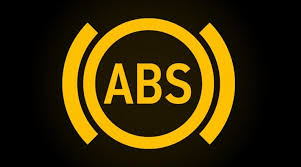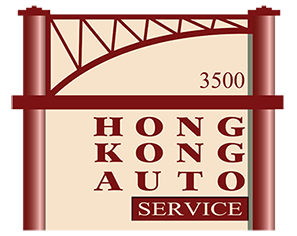What Every Driver Should Know about the ABS on Their Vehicle

Driving in these conditions, however, is another story. Everyone has at least one hair-raising tale that involves ice, sliding and the inability to stop their car. Let’s face it, we can all relate to these winter-time horror stories.
This is where the anti-lock brakes (ABS) on your car can be a literal lifesaver. ABS has been used on cars since at least the late 1960s, but didn’t become standard equipment (right up there with safety belts) until the 1980s.
How Does ABS Work?
In situations where you need to apply the brake hard to avoid hitting an object, most drivers tend to over-apply pressure, which locks up the wheels in vehicles without ABS. When the wheels are locked up, the car skids and you lose control over the vehicle. This is similar to what happens when the car hydroplanes on wet roads.
Many of us were taught to pump the brake pedal to avoid locking up the wheels and skidding out of control. However, the anti-lock braking system does this for you: It pumps the brakes but much faster than the average driver could. When ABS is activated, you not only avoid locking up the wheels, you can also reduce the distance that is needed to stop the vehicle and still maintain control.
How Will I Know if the Anti-Lock Braking System Has Been Activated?
The ABS kicks in when there is heavy or hard braking, regardless of the road conditions. Anytime that you push very hard on the brakes (and are going at speeds over 10-15 mph), the ABS will pump the brake pedal. You will likely feel a slight pulsing sensation in the pedal. It may also feel like your pedal is pushing back against your foot. It feels odd at first, but keep your foot on the pedal and let the ABS do the job it was designed to do.
It’s so important that this bears repeating: Keep your foot on the pedal until the vehicle has stopped! Removing your foot from the brake pedal will stop the ABS.
When the anti-lock braking system has been activated, you will see the ABS warning light, usually located on the dashboard, flash briefly. This warning light is letting you know the system has engaged and is working.
Some drivers say the ABS system makes groaning, scraping or even grinding noises when activated. These sounds can be frightening, but don’t worry because they are normal. If you are concerned that these might not be normal noises, contact a qualified auto repair location like your team at Hong Kong Auto Service.
ABS Can Make You a Better Driver
There is a good reason cars with ABS have lower insurance rates: They minimize the risk that you will have an accident due to skidding out of control.
The ABS on your vehicle helps you be a better driver by:
• Preventing you from over-braking and locking up the wheels.
• Preventing you from losing control of the vehicle.
• Improving the control you have while steering.
• Lowering the risk of a roll-over by preventing the vehicle from leaving the road.
Remember that just because your vehicle has ABS does not mean you can drive unsafely and still expect the vehicle to stop in time to prevent an accident. ABS allows you to have control over the steering during hard braking, but it won’t make up for irresponsible driving habits.
Rear-Wheel and 4-Wheel ABS
Most of today’s cars have 4-wheel ABS, but some light trucks have rear-wheel ABS.
If your vehicle has rear-wheel ABS only, the front brakes can still lock up and send you into a skid. If this is your vehicle and you feel the front wheels lock up, release the pressure on the brake pedal just enough so you can steer the vehicle.
How Can I Tell if My Vehicle Has ABS?
Perhaps the easiest way is to turn your ignition key to the on position. You should see the ABS light. This light is usually yellow and will state “ABS” or possibly “Anti-Lock.” You can also check the owner’s manual. It’s possible that the light has burned out over time, so if you are still in doubt, you can check with a us at Hong Kong Auto Service or with a qualified mechanic closer to you. If your vehicle is from the 1990s or newer, chances are it has ABS.
What if the ABS System on My Vehicle Doesn’t Work?
You can always test the ABS in your vehicle by driving over 15 MPH and then pressing very hard on the brakes. Be certain it is safe to do so and that you are not putting yourself or anyone else at risk! Large empty parking lots or long flat stretches of highways where there is no traffic work well for this test.
When you press hard on the brakes, you should feel a pulsing in the pedal and the ABS warning light should flash. If neither of these happens, make an appointment with us or find a reputable auto repair or mechanic near you to evaluate the ABS on your vehicle.
It is normal for the ABS warning light to flash on and then off when you first start your vehicle. This tells you that the system is working. If the ABS light stays on or comes on when you are not braking or even if you aren’t sure about the ABS on your car and would like it checked, contact us to have this important safety feature looked at by our qualified auto repair technicians.
At Hong Kong Auto Service, we’re a full-service auto repair and tire shop with ASE-Certified Technicians who can expertly diagnose and repair your vehicle’s ABS system, brakes or any other problem you might be experiencing. We are open on Saturdays, too! Call us with any questions you might have at (847) 251-0300.
